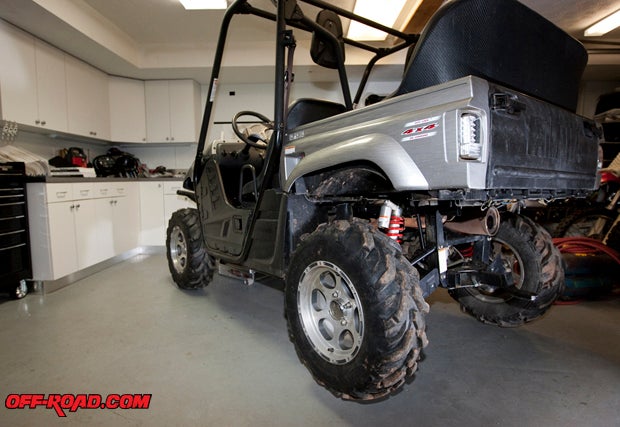
No matter how well we take care of our rides, the facts are that things just wear out. This is more common on anything that could be subjected to the elements that Mother Nature dishes out on the trail. Mud, water and air are a lethal combination for the destruction of bearings any way you look at it. If seals go bad then you can bet your dollars on the repair costs going up.
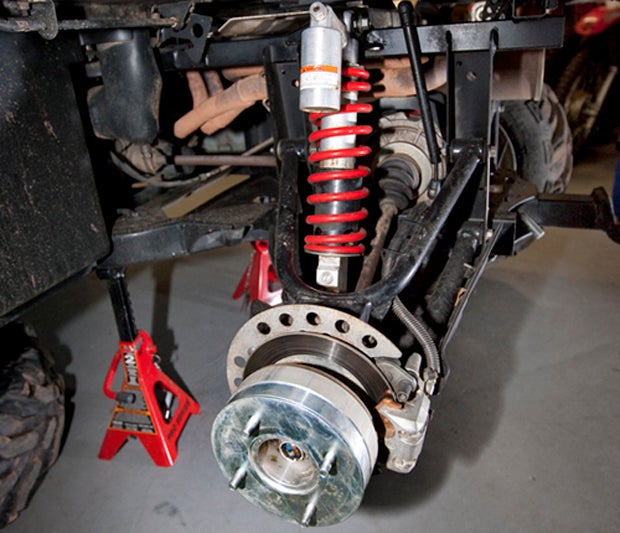
We recently found a somewhat loud clicking noise coming from the rear end of our Yamaha Rhino. This particular Rhino, and í08 Rhino 700 SE, has sealed bearings in the rear suspension knuckles, but it turns out that even those were not beyond breakage. I quickly addressed the issue to keep the bearings from ruining the CV axle shaft or other parts.
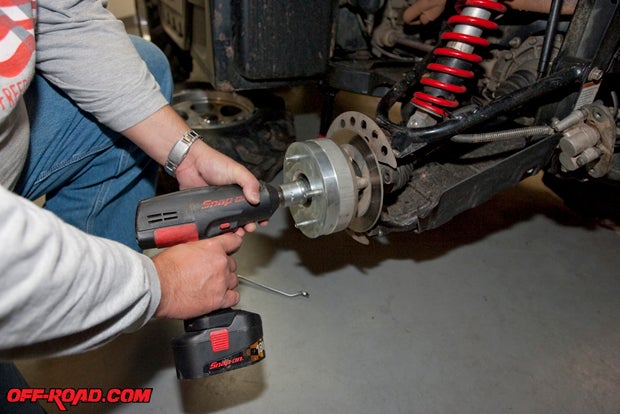
The first task was to be sure the Rhino had plenty of support once lifted into the air by our shop jack. This prevents me from getting squashed should the jack fail or for some reason the rhino shifts during the disassembly. Our next job was to be sure to have all the tools we need close at hand for a smooth teardown and repair.
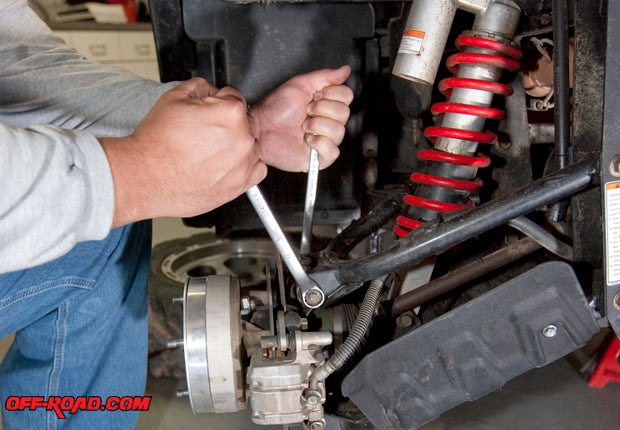
Starting at the left rear wheel, itís not rocket science but be sure the side-by-side has adequate support and then begin to take the wheel off. The next item will be to get the axle nut off. This is a huge nut and will require either an air or electric impact driver to remove it from the CV axle, unless you have a long pull bar to multiply the force on the nut with your 1/2-inch drive 30mm socket. You must first unstake the nut by using a center punch or something similar so the nut can spin off the threads. Stake nuts are used to prevent the nut from backing off during the ride. The outer edge of the nut is simply partially pressed into the keyway on the axle and this holds the nut in place.
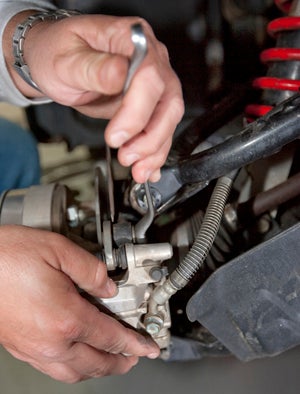
After removing the axle nut you need to remove the brake caliper. There are two bolts on the back of the caliper that when removed will allow you to pull the caliper off the disc and just hang it on the lower suspension arm until you start the reassembly. After the brake caliper is removed you can then pull the hub and disc off of the machine.
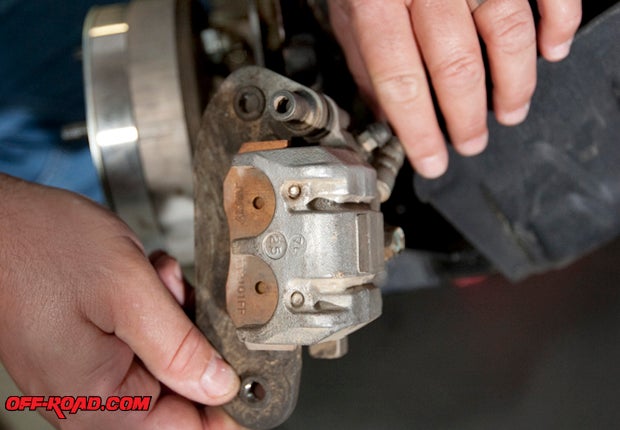
Keep in mind that this procedure will work on most independent front or rear suspended machines in general. The bolts may be different sizes and in different places, but the overall process is generally the same. The next step would be to remove the knuckle from the upper and lower A-arms. There are two bolts that hold the arms to the knuckle, and you should be able to remove these with hand tools. After removal of the bolts, the knuckle can be coaxed off of the axle and the knuckle is ready to be prepped to receive its new bearings.
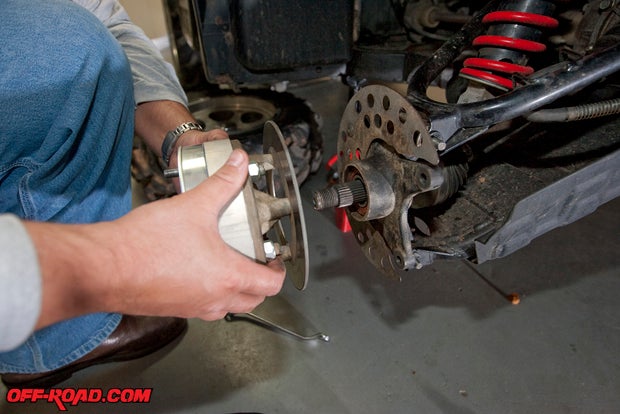
We found the clicking noise source almost immediately, as the ball bearings literally fell out onto the shop floor. One bearing had even broken into two parts inside the race. These bearings were sealed from the factory, but it just goes to show that without proper maintenance they too are subject to failure. The tough part is the removal of the bearings from the knuckle.
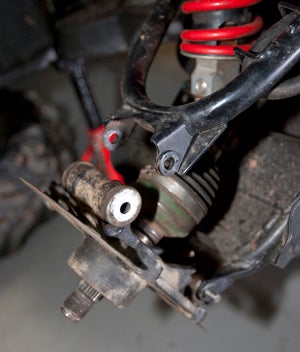
We had the pleasure of having the race inside one of our bearings break into two parts, and we ended up having to use our Dremel to cut the remaining race in half to get it out of the knuckle. The bearings on our Rhino were separated by a thin lip that is made into the knuckle itself. The bearings cannot be pressed straight through the knuckle due to this lip, which also keeps them at the correct level in the knuckle. In other words, the front bearing is pressed in from the front, and the rear from the rear, and they must be removed the same way. There is a small collar or spacer between the bearings that will be reused again after clean up.
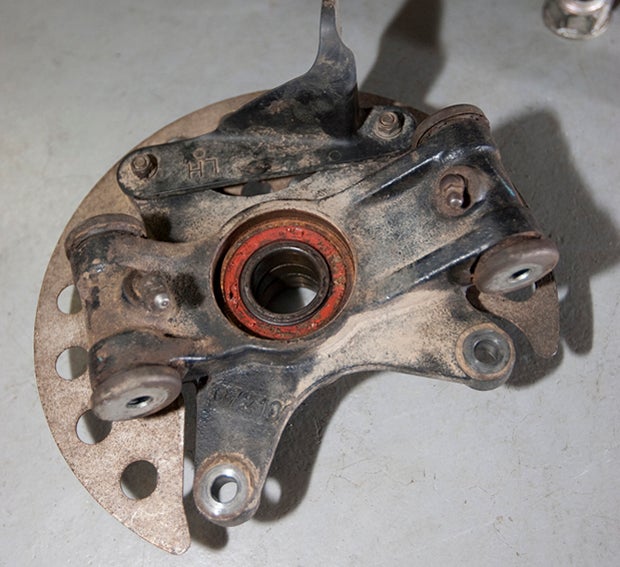
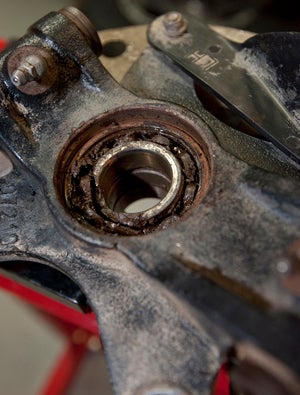
So now we have a knuckle with no bearings, and this thing needed cleaning badly. After removing the thrust covers, spacers and the majority of the old grease, we dunked the knuckle into the parts washer for a thorough cleaning. I wanted to be sure the grease fittings on the knuckle so it actually would work, so I pumped a little grease through them to clear any debris and old grease. This lets me know that every moving part of the rear suspension will be ready for proper lubrication once the reassembly is finished. I also took some Scotch-Brite and cleaned the inside of the knuckle where the bearings would be going. This just assures that the reinstall would be as easy as possible.The use of a good bearing press is a must.
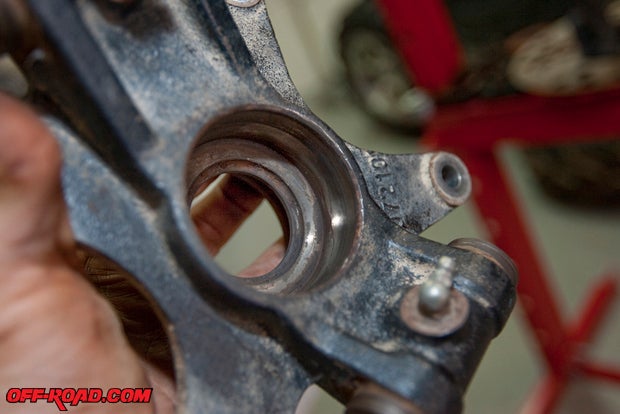
The installation of the new bearings can be done without a press but itís more trouble to do so. We have a 12-ton press from Northern Industrial tools, and it gets the majority of our work here in the shop done without any trouble. Before we attempted to reinstall our bearings into the knuckle, I put them into the freezer for a few hours. I also gently heated the knuckle to around 200 degrees for just about 20 minutes in the shop oven. Remember that this knuckle is going to be very hot to the touch, so if you try this be sure to wear gloves when handling it! This freezer cooling makes the bearings shrink just a bit and the knuckles will expand in the heat of the oven. Overall the two parts will go back together easier and with less pressure. Donít forget the small spacer that goes between the bearings if yours has one!
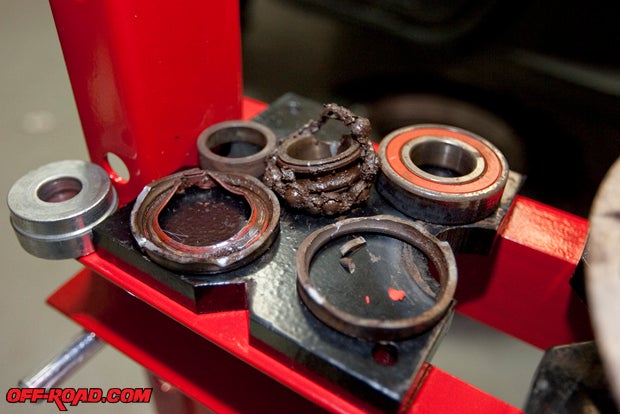
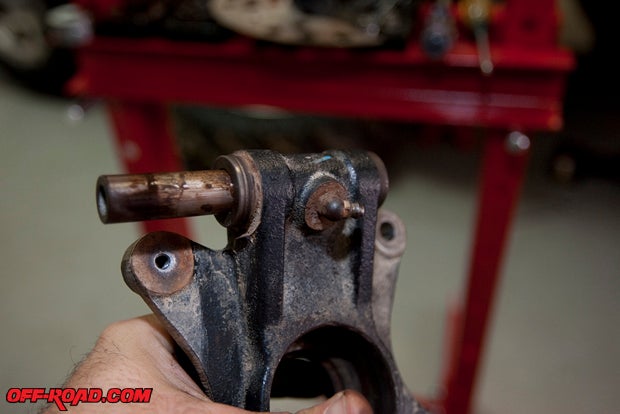
After pressing the bearings back in I let the parts cool off and worked on cleaning the spacers that go through the top and bottom of the knuckle. I also picked up four new thrust covers to reassure the seal on the knuckle pivot points. The last step was to install the front and rear seals on the knuckle, and then it was off to get new paint. I just roughed the outer surface of the knuckle with the same Scotch-Brite pad and then sprayed it with some gloss black paint. My goal was not to make it look new but just add a protective coating of rust-inhibitive paint. Keep in mind that using a bearing press is inherently dangerous. If you are not sure about using one at any point just take the knuckle to the local garage and they can do the deed for you.
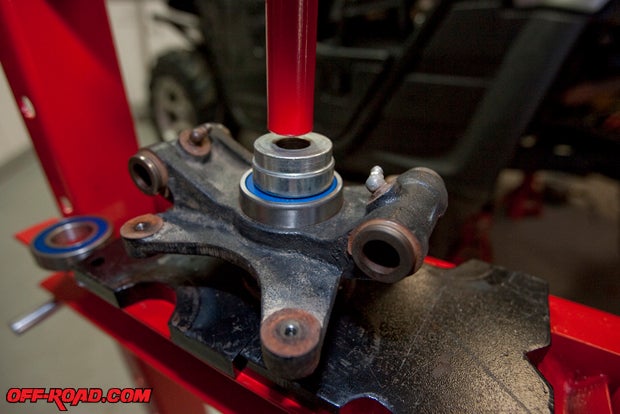
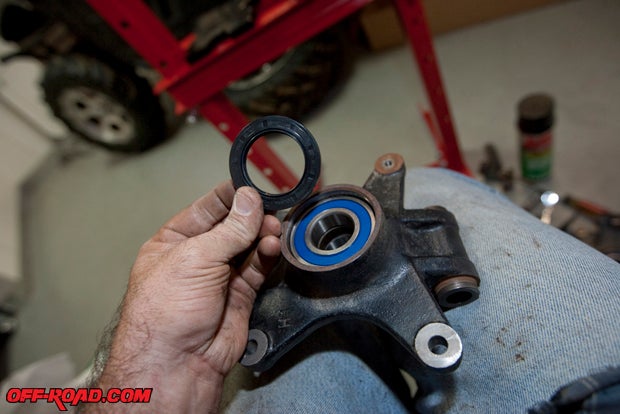
When reinstalling the knuckle into the machine, I made sure to add just a little anti-seize from Loctite to the axle splineís to be sure I could get the axle out of the wheel hub again should I need. Be sure to lubricate anything that has a grease fitting when youíre finished, and be sure to check those from time to time to be sure they are full of fresh grease. Now get to it! The trails are waiting for you!
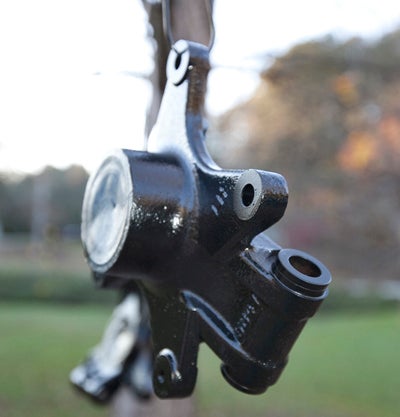
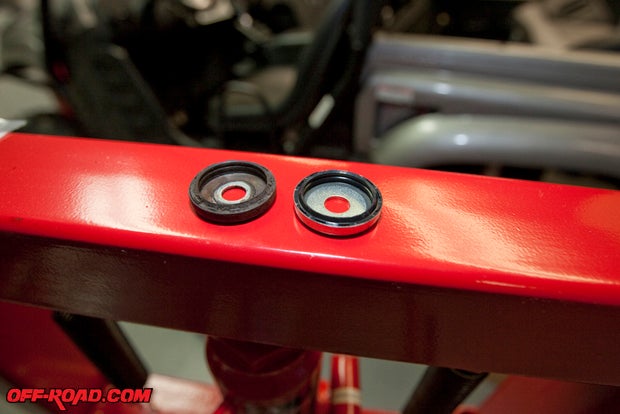
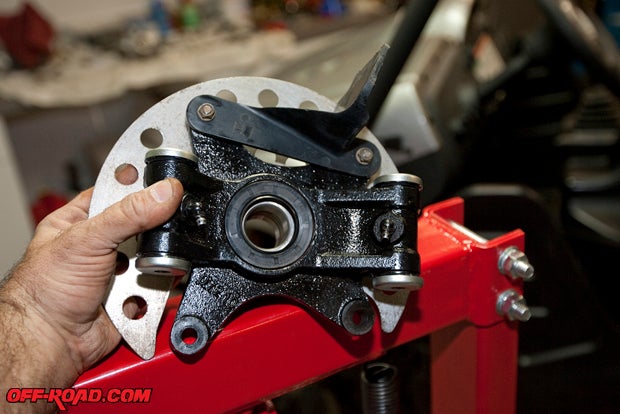
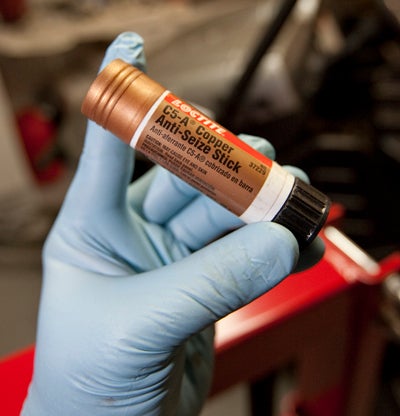


 Your Privacy Choices
Your Privacy Choices